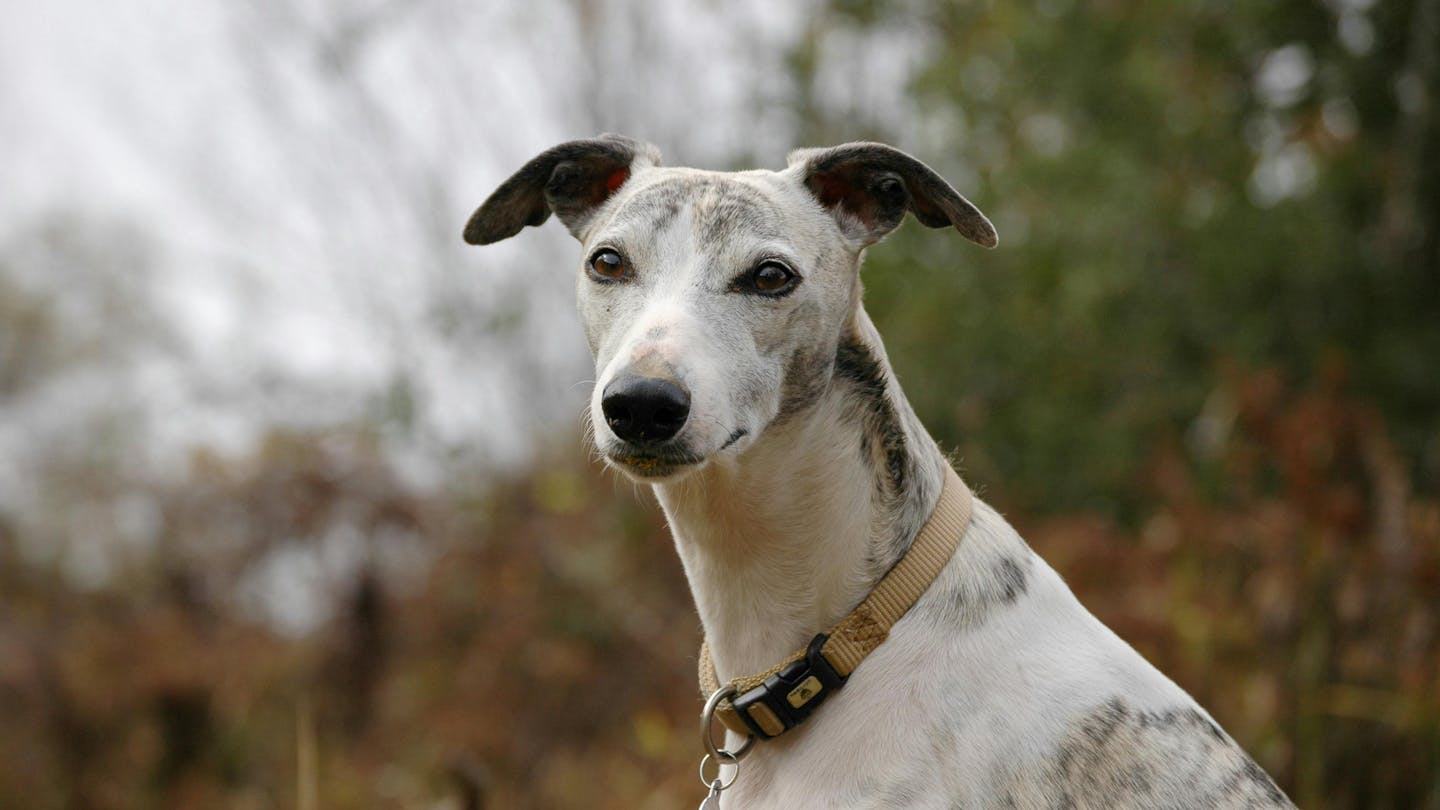
“Childhood,” writes Toni Jordan in her eighth novel, Tenderfoot, “is as much a place as it is a time.” The place? Suburban Brisbane – specifically Morningside – and the city’s greyhound tracks, which throb with punters on race days. The time? Joh Bjelke-Petersen’s febrile 1970s, a memorable era of political regression and palm-greasing by police.
Jordan’s protagonist, the bruised and cerebral Andie, is 12 years old, on the cusp of finishing primary school. She’s a gifted student – precocious but impeccably polite. Despite her natural academic prowess, she has one goal: to drop school at 15 and become a greyhound trainer, just like her beloved father.
In the space of only a few days, though, life as Andie knows it takes a sharp detour – upended by an episode of tween meanness that coincides with her father’s unexpected departure. Beneath the house, only one of the dogs remains, a velvet-eared greyhound named Tippy, her most trusted companion and confidante.
Review: Tenderfoot – Toni Jordan (Hachette)
What unfolds in Tenderfoot is a feat of delicate foreshadowing and reflection. As Andie schemes to regain her social footing and track down her father, she finds herself adrift in a microcosm governed by the curious workings of the track. “Gambling was our religion and the TAB was our church,” Andie explains. “We were people who understood luck.”
As readers, we quickly acclimate to the pre-pubescent logic of Andie’s small world, where the sweetness of Tang and Chupa Chups coexists almost inevitably with the bloodied sugar bags on which Tippy sleeps.
We know something horribly unlucky is looming.

Deference for dogs
Jordan is a seasoned novelist. But Tenderfoot is, perhaps, the book she has long been meant to write, sharing crossovers with her own life.
In her author’s note, she’s careful to point out that although her own parents were greyhound trainers, and her family kept greyhounds as pets, any resemblance between fact and fiction is “coincidental”.
However, the story shines with deference for the dogs:
Those exquisite animals, all that compact muscle and forward propulsion and desperation. The next twenty-five or thirty or forty seconds are the culmination of the dog’s whole life with us from the moment we picked them up as a puppy: all that feeding and brushing and walking, all that preparation and solicitous care compressed and concentrated. They’re triers, the dogs. They are desperate and straining and giving it everything they have. Nothing on earth can stop them.
For a narrative that circles the greyhound racetrack, the plot is painstakingly measured, stretched over the seemingly interminable course of only a few weeks. It edges ever closer to the climax, scored to the natural rhythms of a child’s hopes and eventual disappointments, her perceptions and later discoveries.
Jordan convincingly, and seemingly easily, occupies the interior world of a child – inflected occasionally with the insight of her much older self. Andie’s voice, those dual selves, remains seamless and believable. The effect is sometimes funny, quite often devastating.
Commenting on her Year 7 teacher, for example, Andie innocently remarks: “At the beginning of the year we learned the recorder but Mrs Murphy said she wasn’t being paid enough to listen to that so now we went to the library for quiet reading.” Elsewhere, she relays her mother’s decree that “boobs ruin everything”.
But observations like these are interspersed with others that are deeper and more affecting. Reflecting on her broken family, Andie insists:
We may not have eaten together, and my parents suddenly knew almost nothing about the details of my life, not the names of my teacher or friends or the books I was reading or anything I was learning at school. But I was their moon, secure in my orbit around the planet of their marriage and without them together I would be flung, alone and helpless, into the emptiness of space. I had to do everything in my power to restore things to rights.
In this way, we’re called to return to “the helplessness of being young, that feeling of being a cork tossed by the waves”. Children, Andie knows, “have no say in anything that concerns them and if they try to exert some control over their own life, they are blamed for everything that goes wrong from that day forward”.
Bracing realities of childhood
As a meditation on childhood, Tenderfoot captures some of the more bracing realities of our early years – the ways adults are not always who they seem through a child’s warped gaze.
In the novel, Andie’s absent father permeates her thoughts, lighting her mind and memory “like a beacon”. Her mother, on the other hand, is sharp-tongued and volatile, small but fierce. “I have … never doubted,” Andie reflects at one juncture, pointing obliquely to the story’s climax, “she never forgave me for what I did.”
To reveal any more of the plot would do the book a great injustice. Indeed, its success lies in what Jordan reveals – in deft increments. What I will say is the novel’s resolution doesn’t neatly absolve Andie, or her parents, of the “sins” she later describes. Instead, it explores the complexities of growing up. Of rinsing oneself of assumptions and inculcated beliefs. Of outgrowing the rigid moulds of sexism and abuse that have long shaped the lives of little girls.
Fundamentally, Tenderfoot is about the clarity of hindsight, the necessity of forgiveness.
Of her mother, Andie observes that she
had a cutting tongue and a voice so sharp it made me wince, but the way she screamed when she lost her temper was mostly unrelated to any action of mine, I knew, and more to do with the hours she worked, her exhaustion, the way life had ground against any part of her that’d ever been soft.
Of both her mum and dad, she adds: “Perhaps all parents are like that: too young and unknowing, performing what they imagined to be married life gleaned from their own family and people they knew.”
Idiosyncrasies aside, these are familiar patterns all of us must negotiate in one way or another – to consider our parents with curiosity and compassion, to resist the bait of repetition, the well-worn tracks on which we often find ourselves.
Tenderfoot, the book’s title, pays homage to Tippy, Andie’s favourite, whose race name means something like “a newcomer or novice” or “someone unaccustomed to hardship”.
This is ultimately where the book locates childhood. It’s a story about being new to the world, immersed in a reality “constructed piecemeal” from the things we see and hear, where “unsaid things float in the air, in inferences and winks, and are absorbed like oxygen”.
We’re all triers, the story seems to say. We’re all in pursuit of love, acceptance, fulfilment: things that dangle before us, but can sometimes seem hopelessly out of reach.
This article is republished from The Conversation, a nonprofit, independent news organization bringing you facts and trustworthy analysis to help you make sense of our complex world. It was written by: Amber Gwynne, The University of Queensland
Read more:
- What is Kick, the platform that livestreamed a man’s death this week?
- ‘I hadn’t gone out there to save anybody’: a deep dive into the manosphere fails to address its harms
- ‘There’s no such thing as someone else’s children’ – Omar El Akkad bears witness to the destruction of Gaza and the West’s quiet assent
Amber Gwynne does not work for, consult, own shares in or receive funding from any company or organisation that would benefit from this article, and has disclosed no relevant affiliations beyond their academic appointment.


 The Conversation
The Conversation
 The Babylon Bee
The Babylon Bee Newsweek Top
Newsweek Top AlterNet
AlterNet Raw Story
Raw Story KCTV5 News Kansas Sports
KCTV5 News Kansas Sports